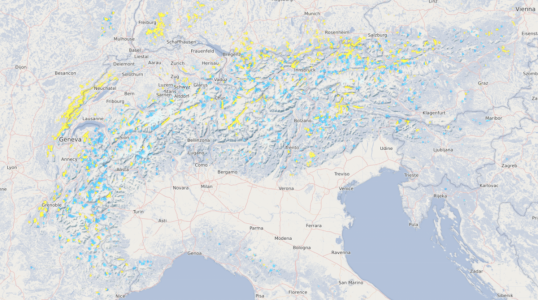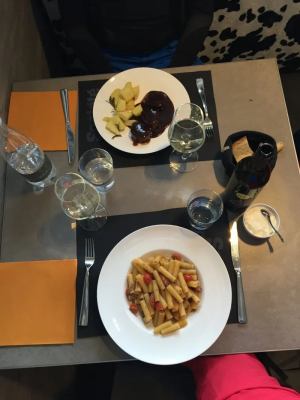Once in a while, a member might seek advice on which ski resort in Europe (mostly the Alps) to visit. In most cases, others first have to find out what characteristics that member is looking for during this trip, both in the skiing sense and in the ‘alpine experience’ sense of things.
Here are some areas, themes, or criteria - whatever you want to call them - on which you could base your starter question. This serves a double purpose: 1. it eliminates that awkward first response on more clarification, and 2. it gives you some guidance and factors to think about and do some research on yourself. In both cases, it will help the one asking the question (and obviously, also the one answering it).
When are you planning to travel? And for how long?
The time/month/period you are traveling may limit your options. Some resorts or types of skiing are ‘better’ or come more into their own in certain conditions. Holidays and crowds are a factor in that (some areas handle crowds better than others), but typical snow cover is also something that is closely linked to the timing of the trip.
The length of your trip goes to the size of the ski area. Some areas are so big you could spend a week or more there. These monster ski areas are relatively expensive and sometimes crowded (the two main downsides of these huge areas, in my opinion). These areas may be overkill if the skiing part of your trip is only two days, for instance. For a short trip, I would rather suggest smaller areas for better quality skiing and a better overall experience.

The Alps. Ski areas in blue, cross country tracks in yellow. Source: www.opensnowmap.org
What type of skiing are you looking for? At what level?
Europe is diverse. Some ski areas are groomer heaven, others are mostly great off-piste. Some areas have it all, but maybe only from February onwards (because of snow cover). Bear in mind: anywhere off the marked runs is technically backcountry skiing in Europe, meaning you’re on your own as far as (avalanche) risk management is concerned, or insurance.
In the off-piste department, things are not as black and white as the official rules suggest, though. In some areas, there is a tonne of accessible, low-risk terrain between the runs. That’s where all the local kids and instructors ski if conditions are favorable. Areas with a lot of terrain above the tree line in France are great examples. They can completely white out during snowfall, though. That’s a downside of that open terrain above the tree line.
There is also the technical, advanced type of off-piste skiing, for which I recommend hiring a guide. Examples are La Grave, Vallée Blanche (Mont Blanc), Val Mezdi (Dolomites), and anything that involves off-piste skiing on a glacier. Do hire a guide for this. Not just to mitigate avalanche and crevasse dangers, but also because they know the terrain well, obviously.
Food and drink, both on and off the mountain
What food are you into? In some areas, there is a lot of fine dining - Michelin star-grade - even on the mountain. In other places, you may find a simple but heavenly pasta almost for free. And then there are areas that just have those massive boiled-in-fat-fries kinds of places to eat. If you care about this stuff, tell us about it. It helps narrow things down a bit. Or at least manage expectations.
The same goes for the village you will be staying in. Do you want to cook yourself? Do you want to go out for dinner every night? Drinks? Parties? Après-ski? And what kind? Party on the mountain and then glide home? Or more of an after-skiing kind of place at the base? A club for parties late into the night? Some villages offer these things, others not so much.

Food on the mountain
Practical stuff
Finally, there is the practical stuff, like transportation to and from and within the ski area. Car rental, public transport, airport transfers, etc. Ski rental, ski schools, and maybe other activities than skiing (snowshoe walks, winter hiking, cross country skiing, sledding, ice skating, ice diving, you name it). If you have specific interests, name them.
The more info you give beforehand, the better the quality of advice that is given. And yes, some of the most well-known places may not be the best for your specific list of requirements. And other ski areas - that you may never have heard of - perhaps are.
More information
On weather zones and snowfall in the Alps: https://www.skitalk.com/threads/know-where-to-go-in-the-alps.24434/
On transport to and in the Alps: https://www.skitalk.com/threads/getting-to-and-through-the-alps.24620/
On school holidays for the 2022-2023 season: https://www.skitalk.com/threads/when-to-ski-the-alps-in-2022-2023-season.26790/
Here are some areas, themes, or criteria - whatever you want to call them - on which you could base your starter question. This serves a double purpose: 1. it eliminates that awkward first response on more clarification, and 2. it gives you some guidance and factors to think about and do some research on yourself. In both cases, it will help the one asking the question (and obviously, also the one answering it).
When are you planning to travel? And for how long?
The time/month/period you are traveling may limit your options. Some resorts or types of skiing are ‘better’ or come more into their own in certain conditions. Holidays and crowds are a factor in that (some areas handle crowds better than others), but typical snow cover is also something that is closely linked to the timing of the trip.
The length of your trip goes to the size of the ski area. Some areas are so big you could spend a week or more there. These monster ski areas are relatively expensive and sometimes crowded (the two main downsides of these huge areas, in my opinion). These areas may be overkill if the skiing part of your trip is only two days, for instance. For a short trip, I would rather suggest smaller areas for better quality skiing and a better overall experience.

The Alps. Ski areas in blue, cross country tracks in yellow. Source: www.opensnowmap.org
What type of skiing are you looking for? At what level?
Europe is diverse. Some ski areas are groomer heaven, others are mostly great off-piste. Some areas have it all, but maybe only from February onwards (because of snow cover). Bear in mind: anywhere off the marked runs is technically backcountry skiing in Europe, meaning you’re on your own as far as (avalanche) risk management is concerned, or insurance.
In the off-piste department, things are not as black and white as the official rules suggest, though. In some areas, there is a tonne of accessible, low-risk terrain between the runs. That’s where all the local kids and instructors ski if conditions are favorable. Areas with a lot of terrain above the tree line in France are great examples. They can completely white out during snowfall, though. That’s a downside of that open terrain above the tree line.
There is also the technical, advanced type of off-piste skiing, for which I recommend hiring a guide. Examples are La Grave, Vallée Blanche (Mont Blanc), Val Mezdi (Dolomites), and anything that involves off-piste skiing on a glacier. Do hire a guide for this. Not just to mitigate avalanche and crevasse dangers, but also because they know the terrain well, obviously.
Food and drink, both on and off the mountain
What food are you into? In some areas, there is a lot of fine dining - Michelin star-grade - even on the mountain. In other places, you may find a simple but heavenly pasta almost for free. And then there are areas that just have those massive boiled-in-fat-fries kinds of places to eat. If you care about this stuff, tell us about it. It helps narrow things down a bit. Or at least manage expectations.
The same goes for the village you will be staying in. Do you want to cook yourself? Do you want to go out for dinner every night? Drinks? Parties? Après-ski? And what kind? Party on the mountain and then glide home? Or more of an after-skiing kind of place at the base? A club for parties late into the night? Some villages offer these things, others not so much.

Food on the mountain
Practical stuff
Finally, there is the practical stuff, like transportation to and from and within the ski area. Car rental, public transport, airport transfers, etc. Ski rental, ski schools, and maybe other activities than skiing (snowshoe walks, winter hiking, cross country skiing, sledding, ice skating, ice diving, you name it). If you have specific interests, name them.
The more info you give beforehand, the better the quality of advice that is given. And yes, some of the most well-known places may not be the best for your specific list of requirements. And other ski areas - that you may never have heard of - perhaps are.
More information
On weather zones and snowfall in the Alps: https://www.skitalk.com/threads/know-where-to-go-in-the-alps.24434/
On transport to and in the Alps: https://www.skitalk.com/threads/getting-to-and-through-the-alps.24620/
On school holidays for the 2022-2023 season: https://www.skitalk.com/threads/when-to-ski-the-alps-in-2022-2023-season.26790/

